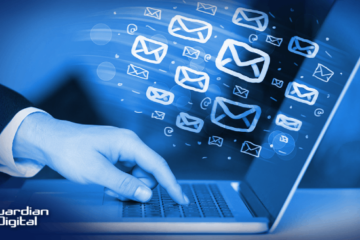Hey there! Have you ever thought about how scary it would be to fall victim to a cyberattack through email in today’s digital age? It’s a nightmare scenario for anyone, especially for businesses that rely heavily on Microsoft Exchange email servers. Without the right protection measures, these servers are prime targets for cyber threats.
But don’t worry, we’re here to help you secure your Exchange servers and shield them against potential data breaches. Let’s dive into the risks you might face as an Exchange user and explore different strategies to fortify your systems against both current and emerging threats.
The Importance of Email Security Intelligence
When we talk about email security intelligence, we’re referring to the strategies, technologies, and best practices used to safeguard email communications from various dangers. In today’s world, email is a major target for cyberattacks, and it’s crucial to understand the risks associated with popular platforms like Microsoft Exchange.
Understanding Exchange Email Risk
Businesses that rely on Exchange for email are constantly at risk of attacks aimed at their servers. These risks have become more pronounced in recent years due to sophisticated cyber threats. In fact, according to CISA, over 90% of all breaches occur through email.
Additionally, IBM’s X-Force Threat Intelligence Index highlights email as the top attack vector, underscoring the growing need for robust email security measures.
The vulnerabilities in Exchange server security are not new. Just last year, Microsoft had to issue a critical patch for a vulnerability dating back to 2010, which exposed systems to malicious actors. This serves as a reminder that constant vigilance and prompt action are necessary to address security flaws.
As the cyber threat landscape evolves, organizations must stay vigilant and understand how these attacks work to implement effective defenses.
How Advanced Attacks Work
Preventing attacks involves understanding how cybercriminals operate. Once they gain access to a vulnerable Exchange server, they can upload malicious code to steal sensitive data and compromise the system further. This cycle includes exploiting vulnerabilities, exploring other servers, and gathering information on mailboxes.
Attackers often create new accounts on the server to maintain access without detection. They may also disable security measures to prolong their malicious activities.
Key Risks Associated with Exchange Servers
Phishing attacks, ransomware, and insider threats pose significant risks to Exchange servers. Phishing, in particular, has reached record levels, with millions of attempts reported monthly. Ransomware attacks can encrypt email data, while insider threats can jeopardize sensitive information.
To mitigate these risks, organizations must prioritize patch management, enable antivirus software, monitor for suspicious activity, enforce access controls, and invest in managed security solutions.
Security Intelligence is Essential
Security intelligence is crucial for Exchange servers. By aggregating data from various sources, organizations can identify potential threats and reduce response time. Training and awareness are key to preventing human error, which accounts for 90% of breaches.
As cyberattacks become more sophisticated, advanced security measures are essential to protect against evolving threats.
Keep Learning About Improving Exchange Email Security
Staying informed about Exchange email security is vital for organizations. By implementing comprehensive security systems, following best practices, and securing the cloud, you can enhance your email security posture and protect against advanced threats.
Stay updated on the latest tips for staying safe online and continue learning about enhancing Microsoft Exchange email security to safeguard your digital communications.
- Implement a comprehensive email security system to prevent targeted attacks.
- Follow best practices to enhance email security.
- Secure your email integrity with spam filtering and anti-spam services.
- Stay informed about online safety.



